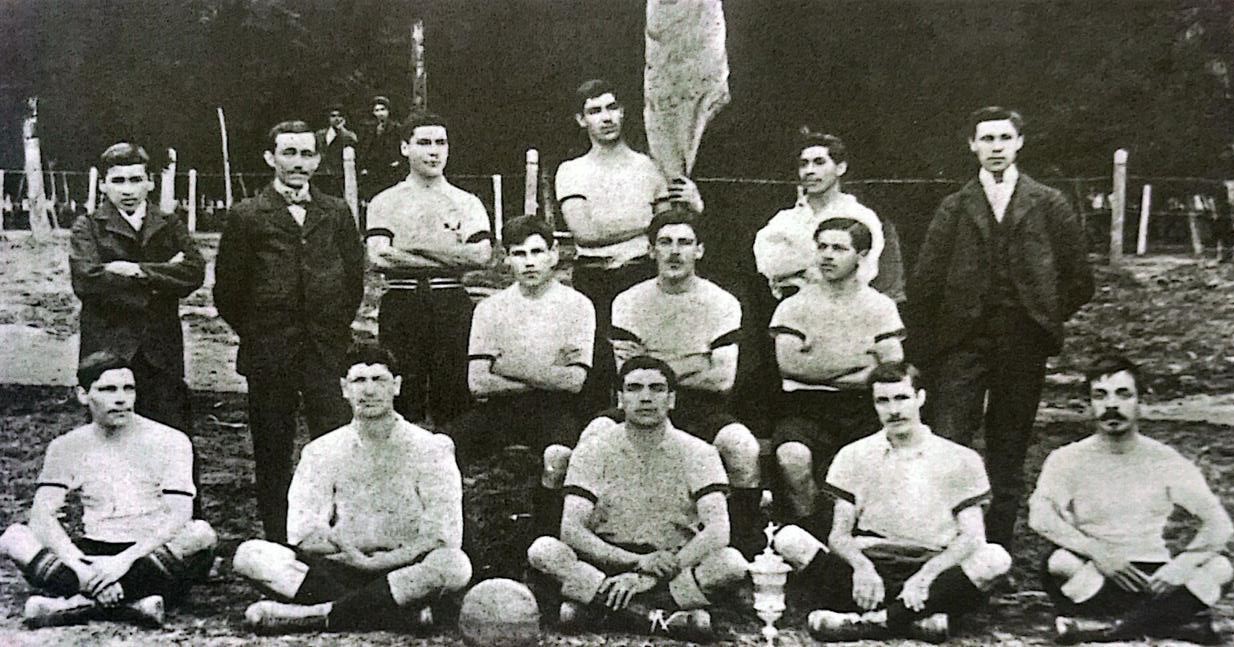|
Santiago Wanderers
Club de Deportes Santiago Wanderers is a football club based in Valparaíso, a founding member of the Chilean Football Federation. Their home ground, Estadio Elías Figueroa Brander, is in the north-west of the city. Wanderers have played their games there since 1931 after moving from Barrio Puerto. Founded on 15 August 1892, it is the country's oldest club and the oldest football team in Chile and the entirety of the Americas. For this reason, Wanderers is known in Chile as the ''Decano del fútbol chileno'' ("The dean of Chilean football") and forms part of CONMEBOL's ''Club de los 100'', section which congregates Latin-American teams founded over 100 years ago. In 2007, the club was declared as part of Valparaíso's intangible heritage. The club's home colours are green shirts and socks with white shorts, which are based on the colours of the Irish national football team. Wanderers have a fierce rivalry with cross-city neighbours Everton and the two sides contest the Clás ... [...More Info...] [...Related Items...] OR: [Wikipedia] [Google] [Baidu] |
Estadio Elías Figueroa Brander
Estadio Elías Figueroa Brander ( , in English: Elías Figueroa Brander Stadium), formerly known as ''Estadio Regional Chiledeportes'' and ''Estadio Municipal de Valparaíso'', is a multi-purpose stadium in Valparaíso, Chile. It is commonly known as Estadio Playa Ancha, due to the suburb where it is located. It is currently used mostly for football matches and is the home stadium of Santiago Wanderers. The stadium holds 20,575, was built in 1931''Stadiums in Chile'' . worldstadiums.com and renovated in 2014. The highest attendance at the Elías Figueroa, then "Municipal de Valparaiso", was 23,109 for a Primera Division league match between and |
Working-class
The working class is a subset of employees who are compensated with wage or salary-based contracts, whose exact membership varies from definition to definition. Members of the working class rely primarily upon earnings from wage labour. Most common definitions of "working class" in use in the United States limit its membership to workers who hold Blue-collar worker, blue-collar and Pink-collar worker, pink-collar jobs, or whose income is insufficiently high to place them in the middle class, or both. However, socialists define "working class" to include all workers who fall into the category of requiring income from wage labour to subsist; thus, this definition can include almost all of the working population of developed country, industrialized economies. Definitions As with many terms describing social class, ''working class'' is defined and used in different ways. One definition used by many socialism, socialists is that the working class includes all those who have nothin ... [...More Info...] [...Related Items...] OR: [Wikipedia] [Google] [Baidu] |
Santiago Wanderers En 1904
Santiago (, ; ), also known as Santiago de Chile (), is the capital city, capital and largest city of Chile and one of the largest cities in the Americas. It is located in the country's Chilean Central Valley, central valley and is the center of the Santiago Metropolitan Region, which has a population of seven million, representing 40% of Chile's total population. Most of the city is situated between above mean sea level, above sea level. Founded in 1541 by the Spanish conquistador Pedro de Valdivia, Santiago has served as the capital city of Chile since colonial times. The city features a downtown core characterized by 19th-century neoclassical architecture and winding side streets with a mix of Art Deco, Gothic Revival, and other styles. Santiago's cityscape is defined by several Inselberg, standalone hills and the fast-flowing Mapocho River, which is lined by parks such as Parque Bicentenario, Parque Forestal, and Parque de la Familia. The Andes, Andes Mountains are visibl ... [...More Info...] [...Related Items...] OR: [Wikipedia] [Google] [Baidu] |


